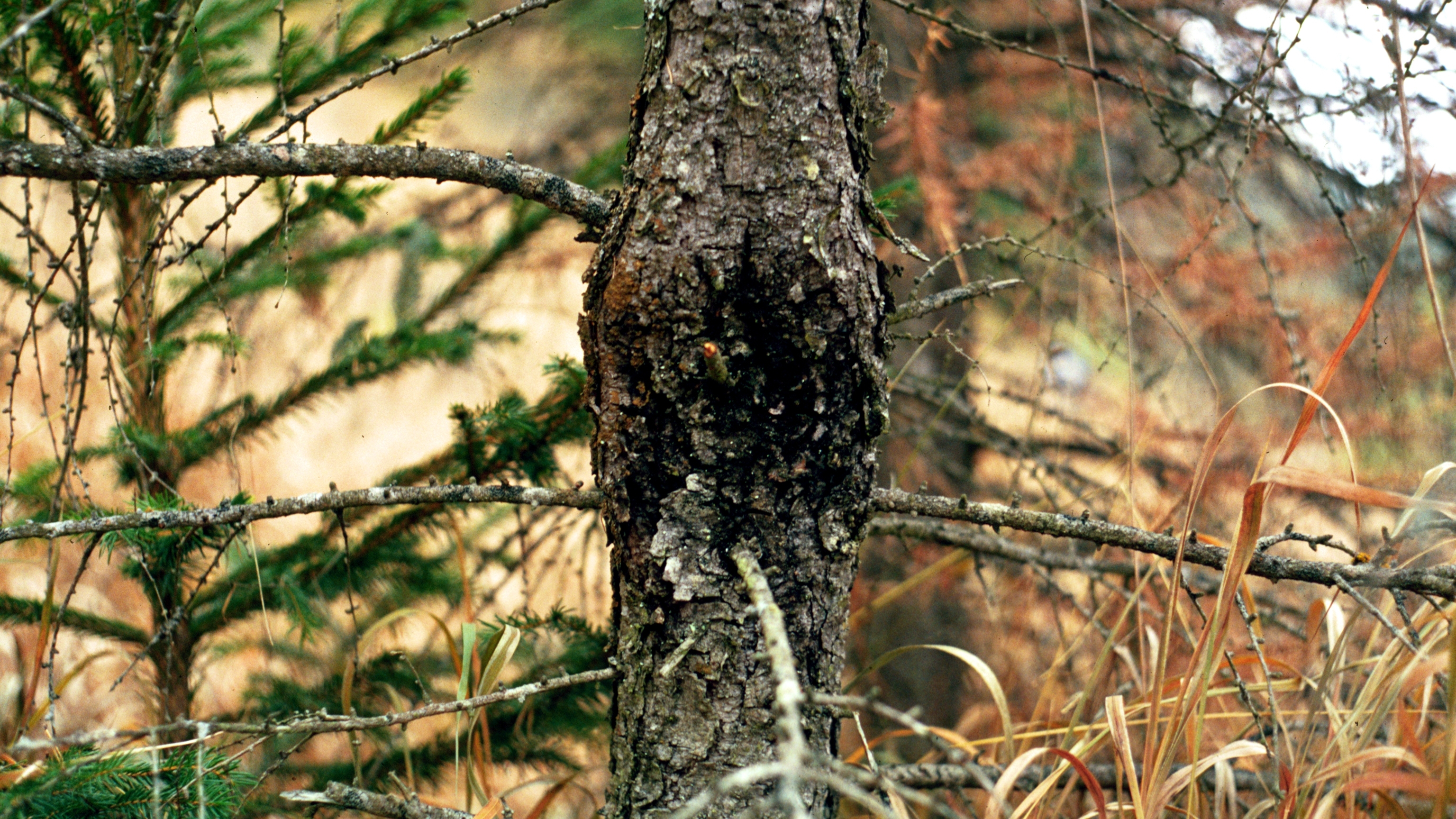European Larch Canker

Andrej Kunca, National Forest Centre - Slovakia, Bugwood
European larch canker is a serious plant disease caused by the fungus Lachnellula willkommii. Once introduced, it attacks and spreads among all species of larch trees (Larix spp.). The disease causes large numbers of cankers to form on the branches and trunks of infected trees, eventually killing them.
European larch canker is established in Europe and present in several other countries. In North America, it is only found in areas of Canada and nearby counties in Maine, where it was first detected in 1981. U.S. and Canadian regulations and trade restrictions help keep this disease from spreading further.
Controlling European Larch Canker
In the United States, European larch canker is confined to Hancock, Knox, Lincoln, Waldo, and Washington Counties in Maine.
Maps
APHIS and the State of Maine carry out surveys, enforce regulations, and conduct public outreach to mitigate the impacts and spread of European larch canker. Together we restrict trade and transport of larch (Larix and Pseudolarix spp.), including logs, pulpwood, branches, twigs, and bark-bearing products made from larch (seeds are exempt). Several counties in Maine are under Federal and State quarantines for the disease.

